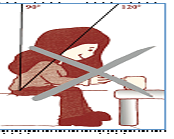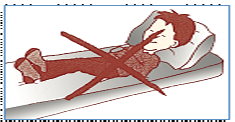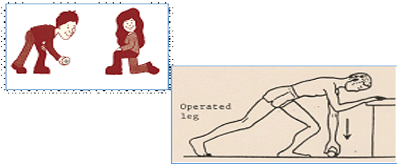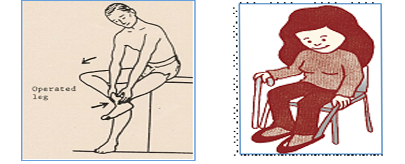Avoiding Dislocations in Total Hip Replacement
Dislocation is a rare event after a total hip replacement. It means that your prosthetic ball came completely out of the socket. In most cases, gentle traction of your leg with mild sedation allows relocation of the prosthesis. Surgery is seldom necessary to reduce a dislocated hip. Though the risk of dislocation is low after the third postoperative month, dislocation can occur late, years or decades after your operation. The dislocation can be produced by multiple factors, including trauma due to a fall or accident, failure to avoid the positions that can dislocate your hip, poor muscle tension across your hip, among others. Some patients may experience a partial, painful dislocation (subluxation) if they do not comply with the hip precautions. Once your hip dislocated, there is damage of the soft tissue envelope around your hip and the likelihood of having a new dislocation is higher than if you would have never dislocated your hip. Therefore, prevention is paramount.In order to prevent a dislocation, please follow the following instructions:
Necessary precautions, restrictions and instructions include but not restricted to the following
There are three basic movements that must always be avoided. These precautions apply in all positions including sitting, standing and whilst getting in and out of bed or a chair.
- Dont move your hip into more than a 90- degree flexion. This means no sitting on low stools, low chairs, low toilets etc.
- Dont cross your legs: the operated leg must always be kept out to the side, away from the midline of the body.
- Do not pivot or twist on the operated leg, or roll operated leg in. The toes and the knee cap should always point straight ahead or slightly outwards and not inwards.



Sitting:
- Sit in high armchairs with firm base and not on a swivel or rocking chair.
- Raise your bed to about 24 inches by placing an extra mattress or blocks under its feet.
- Do not bend the hip more than 90 degrees.
- Do not cross your knees.
Toileting:
- Use a high toilet seat (approx. 24 inches high) or use a toilet seat raiser
In bed:
- Avoid sitting on a low bed. Also make sure that your bed is firm.
- When lying in bed straight or on your side, keep a pillow between your knees
- Dont lean forward to pull up the blankets
- Dont cross your ankles or legs

Picking up objects:
- When bending, stretch operated leg out behind you
- When kneeling, kneel onto operated leg or lean on a piece of furniture as shown

Dressing and washing:
- To reach your foot, bring your knee outwards and the foot inwards, so that you see the inner part of your thigh, knee and leg. If you cannot reach your foot easily, do not force it
- When dressing, washing or putting shoes use long-handled equipment (Shoe Horn) or call for assistance from your care provider.


Dr. Aman Dua
M.S. Orthopedics (AIIMS, New Delhi), D.N.B. Orthopedics,
M.N.A.M.S., P.G.D.H.M.
Director - Joint Replacement
Fortis Escorts Hospital, Delhi




